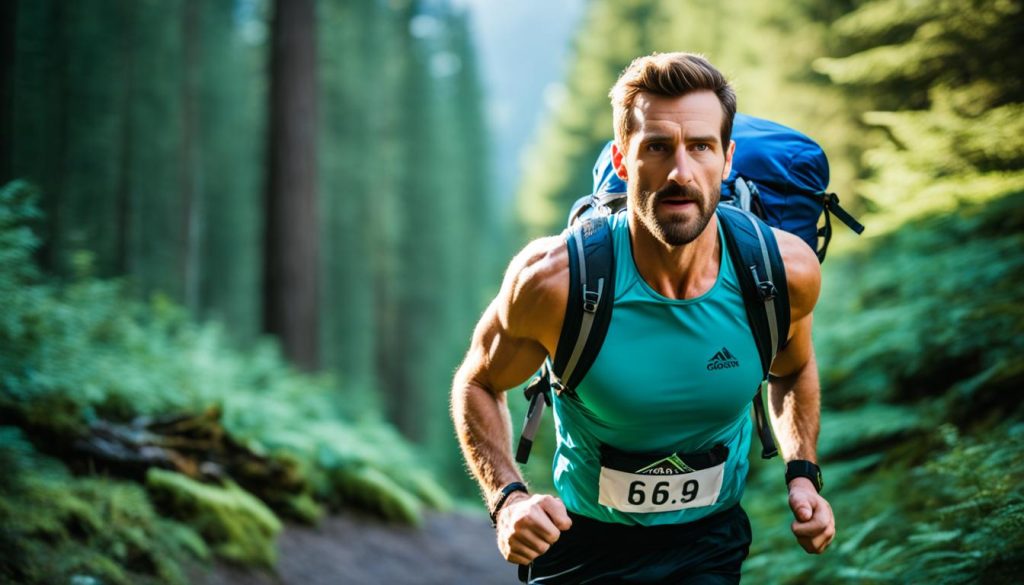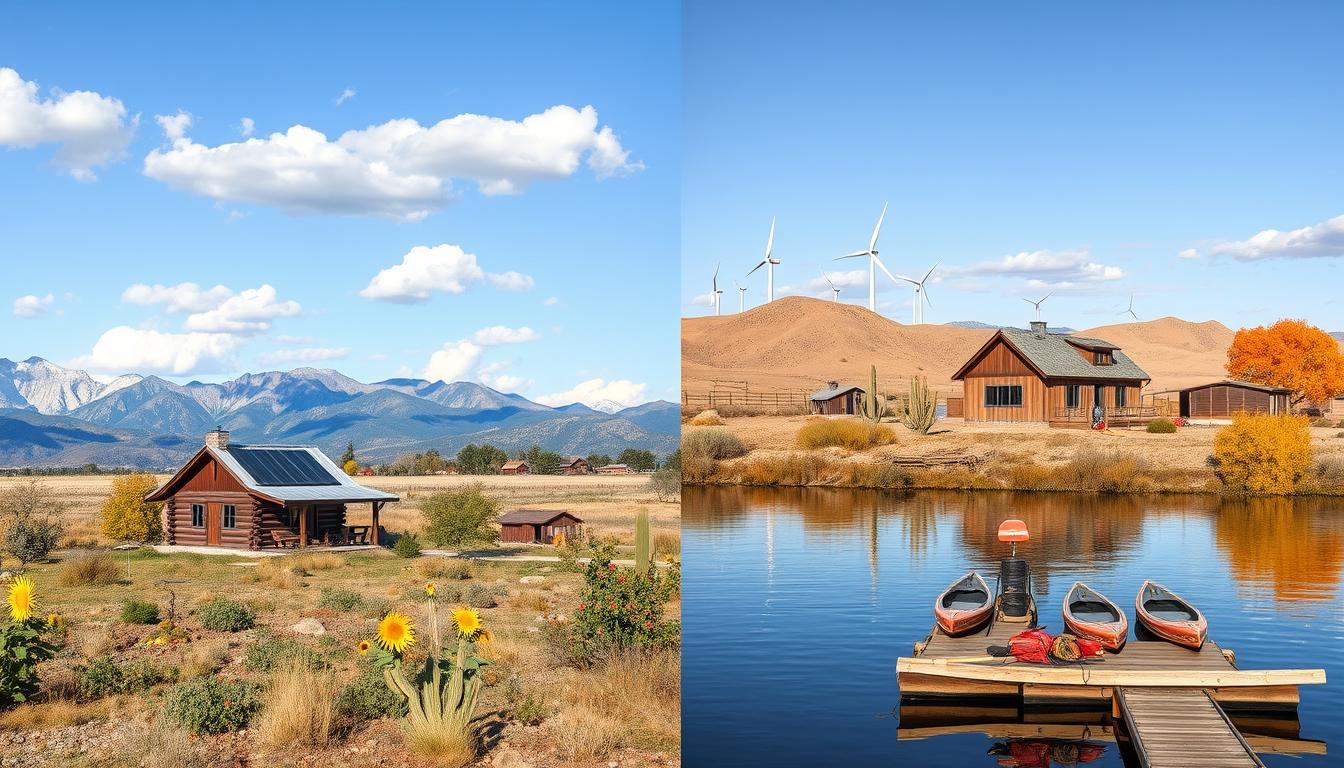In today’s world, knowing how to survive is key. It’s vital for outdoor lovers, first responders, and anyone ready for emergencies. Being fit and trained can change how well you do in tough situations. This guide will show you how to get ready for survival, both physically and mentally.
Key Takeaways
- Develop cardiovascular endurance to sustain physical exertion during survival scenarios
- Build muscular strength and endurance to handle the demands of outdoor activities and emergency situations
- Enhance flexibility and mobility to improve agility and adaptability in survival situations
- Prioritize nutrition and hydration to fuel your body for optimal performance and resilience
- Cultivate a survival mindset to stay mentally sharp and resilient in high-stress environments
The Importance of Physical Preparedness
Surviving tough times needs more than just a strong mind. Being fit is key to getting through survival challenges. The importance of physical fitness for survival is huge. Without it, the fitness demands in survival situations can be too much.
Why Fitness Matters in Survival Scenarios
Your physical strength can save your life in survival situations. You’ll need to move through tough terrain and carry heavy stuff. Being fit is a must. Survival tests your endurance, strength, and agility, making fitness a key part of your survival plan.
Understanding the Demands of Survival Situations
Survival can be tough and requires a lot from your body. Survival situations need you to have many physical skills. These situations might include:
- Prolonged periods of hiking and trekking
- Carrying heavy loads of supplies and equipment
- Navigating uneven, rugged terrain
- Performing physically intensive tasks like building shelters or gathering resources
- Enduring harsh environmental conditions, such as extreme temperatures or inclement weather
Knowing what survival situations require is the first step in getting ready. By building your physical skills, you boost your chances of making it through tough times.
“Physical fitness is not only one of the most important keys to a healthy body, it is the basis of dynamic and creative intellectual activity.” – John F. Kennedy
Developing Cardiovascular Endurance
Building endurance for survival is key. Cardio training is a big part of this. It helps you keep going, move fast, and stay energized in tough spots.
To get strong cardiovascular endurance, add aerobic exercises to your routine. These include:
- Brisk walking or hiking
- Jogging or running
- Cycling, either outdoors or on a stationary bike
- Swimming or other water-based activities
- Rowing or using an elliptical machine
Start with short cardio sessions and slowly increase the time and intensity. Aim for 30-60 minutes of steady activity a few times a week. Always pay attention to your body to avoid getting hurt or feeling too tired.
“Cardiovascular endurance is the foundation of physical preparedness for survival situations. By building this critical fitness component, you’ll be better equipped to navigate challenging environments and maintain your energy levels when it matters most.”
Using interval training can also boost your cardio training for preparedness and building endurance for survival. This method involves short bursts of hard work followed by easy recovery. It’s great for your fitness and breathing ability.
Being consistent is important for building cardiovascular endurance. Stick with your exercise plan and don’t give up. With hard work and determination, you’ll get the endurance you need for survival.
Building Muscular Strength and Endurance
Building muscle strength and endurance is key for surviving tough situations. You might need to carry heavy loads, climb, or do hard tasks. Having a strong body can really help. We’ll look at good ways to train and exercises you can do anywhere to get ready for survival.
Resistance Training for Survival
Strength training for survival boosts your physical skills. Doing exercises like squats, deadlifts, and push-ups works many muscles at once. This builds your strength all over. It also makes you better at keeping good form and balance, which is important for tough terrain or hard tasks.
Bodyweight Exercises for Outdoor Training
When you don’t have weights, bodyweight exercises for outdoor training are great. You can do pull-ups, lunges, and core exercises like planks and side planks anywhere. These exercises work your muscles, improve balance, and make you more resilient.

“The ability to move your own body weight with control and efficiency is a key aspect of survival fitness.”
A good fitness plan should include strength training, muscle endurance, and bodyweight exercises. This mix helps you do well in survival situations. By getting fit, you’re ready for anything that comes your way.
Enhancing Flexibility and Mobility
Being flexible and mobile is key to getting ready for survival. These skills help you move over tough terrain and avoid getting hurt. They make it easier to adjust to the physical needs of survival situations.
The Role of Flexibility in Survival
Having a lot of improving flexibility for survival means you can move easily and avoid getting hurt. It helps with climbing over obstacles, walking on rough ground, or doing hard tasks. Mobility for preparedness is crucial to avoid getting injured.
Adding stretching and mobility exercises to your survival training helps your body be more flexible and strong. This way, you’ll do better physically and have a better chance of surviving tough situations.
“Flexibility is not just about being able to touch your toes; it’s about maintaining the range of motion necessary to adapt to your environment and perform essential survival tasks with ease.”
Using different stretching methods like static, dynamic, and myofascial release can improve your flexibility and mobility. Spending time on these exercises is very helpful when you’re facing survival challenges.
- Prioritize regular stretching and mobility exercises
- Focus on improving range of motion in key joint areas
- Explore different stretching techniques to find what works best for you
- Integrate flexibility training into your overall survival preparedness regimen
By getting better at flexibility and mobility, you’ll be ready for the surprises of survival situations. This will help you stay safe and strong.
Agility and Balance: Essential Skills for Survival
When survival is at stake, moving fast, staying stable, and acting quickly can save your life. Agility and balance are key skills. They help you move through tough places, get over obstacles, and react fast to dangers.
Agility lets you change direction and speed easily. It’s crucial for moving on rough ground, avoiding dangers, or getting away from threats. Being agile means you can move smoothly and quickly, giving you an edge in survival.
Balance is about keeping your body steady and in control. It’s important for walking on shaky ground, crossing streams, or going over rough paths. Working on your balance makes you more stable and coordinated. This lets you move with confidence and efficiency in the wild.
Exercises to Boost Agility and Balance
Here are some exercises to improve these important survival skills:
- Agility Ladder Drills: Move through a ladder pattern on the ground to work on your agility and foot speed.
- Balance Beam Exercises: Walk on a narrow beam to test your balance and proprioception.
- Lateral Plyometric Movements: Do side-to-side jumping to boost your explosive lateral agility.
- Single-Leg Balancing: Stand on one leg at a time to improve your core stability and balance.
“Agility and balance are the hallmarks of the prepared mind and body. Mastering these skills can mean the difference between survival and struggle in the wild.”
Working on your agility and balance for survival is key. It gives you the physical skills you need to handle survival challenges. This physical preparedness helps you act with confidence and resilience when things go wrong.
Physical fitness for survival situations
Getting fit is key when you’re preparing for survival. Survival can be tough, needing a mix of skills to get through tough spots. With good fitness training, you’ll be ready to face hard times.
It’s important to work on your fitness in several areas. This includes your heart health, muscle strength, flexibility, and quickness. Let’s see how these can help you stay fit for survival.
Cardiovascular Endurance
Being fit in your heart is vital for survival. It keeps your energy up and lets you move long distances or do hard activities for a long time. Doing cardio like running, hiking, or swimming will boost your stamina for survival.
Strength and Endurance
Being strong helps you carry and move heavy things in survival situations. Resistance training and bodyweight exercises can build your muscle strength and endurance. This is useful for carrying gear, building shelters, or going over tough ground.
Flexibility and Mobility
Being flexible and mobile lets you get past obstacles, avoid getting hurt, and do many activities easily. Adding stretching, yoga, and other exercises that focus on moving well can make you more ready for survival.
Agility and Balance
Being quick, changing direction fast, and staying stable is key in survival. Doing plyometric exercises and balance drills can improve your coordination and speed. This helps you move through tough places and get over hurdles.
Adding these fitness parts to your training makes you better prepared for survival. Remember, it’s not just about being strong or able to go long. It’s about having a mix of skills that help you adapt and do well in tough situations.

Nutrition and Hydration for Survival Preparedness
In survival situations, your body’s ability to function well is key. Nutrition for survival and hydration for preparedness keep you going. This section will cover how to fuel your body for survival and stay hydrated. It will give you tips to make sure you’re ready with the right food and water for survival.
Fueling Your Body for Survival
Survival often means a lot of hard work, like hiking, building shelters, or finding food. Your body needs a balanced diet for these tasks. Choose foods that are full of calories, nutrients, and easy to carry, such as:
- Dried fruits and nuts
- Energy bars or protein bars
- Canned or dehydrated meats
- Whole grains, such as oats or quinoa
- Dried vegetables and legumes
Eating these foods will help fuel your body for survival. It gives you the energy and strength you need to get through tough times.
Staying Hydrated in Challenging Environments
Being well-hydrated is crucial for staying sharp and healthy in survival situations. Dehydration can make you tired, slow your thinking, and even be dangerous. Here’s how to stay hydrated:
- Carry a reliable water filter or purification tablets
- Drink water regularly, even if you’re not thirsty
- Eat foods with a lot of water, like fruits and veggies
- Avoid too much caffeine and alcohol, which dry you out
By fueling your body for survival and keeping up with hydration for preparedness, you’ll be ready for anything survival throws your way.
“Proper nutrition and hydration are the foundation for physical and mental resilience in survival situations.”
Training for Specific Survival Scenarios
Getting ready for survival needs a detailed plan. Training for certain situations is key. By focusing your workouts and skills on different survival challenges, you boost your readiness. This helps you do well in many emergency situations.
Dealing with a natural disaster, a wilderness trip, or an urban crisis brings different challenges. Training for specific survival situations helps you get the skills and flexibility to handle these challenges well.
- Natural Disaster Preparedness: For natural disasters, work on your heart health, muscle strength, and quick moves. Practice emergency actions and disaster relief in simulations.
- Wilderness Survival: In the wild, focus on finding your way, building shelters, making fires, and cleaning water. Train outside to get better at surviving in the wild.
- Urban Crisis Response: For city crises, work on staying alert, avoiding danger, and first aid. Practice moving through crowded places and handling sudden changes in the city.
Customizing your training for different survival situations makes you more adaptable and strong. Training for specific survival situations is a continuous effort. Always work on improving your skills and stay ready.
Mental Toughness and Resilience
Surviving tough situations isn’t just about being physically fit. It’s also about having a survival mindset. This mindset includes mental toughness and resilience. These traits help you face the mental challenges of survival. This section will show you how to build the mental strength needed to succeed.
Developing a Survival Mindset
To start building mental toughness for survival, change how you think. See survival challenges as chances to test your limits and grow stronger. Keep a positive, flexible mindset that loves solving problems and adapting.
- Practice mental imagery to see yourself doing well in survival situations.
- Know yourself well to understand your strengths, weaknesses, and how you act under stress.
- Work on emotional intelligence to handle anxiety, fear, and other strong feelings.
“Resilience is not about being unbreakable. It’s about having the strength to put the pieces back together again.” – Unknown
Building resilience in survival situations also means having coping skills and a support network. Be around people who can help and motivate you. Use stress-management techniques to keep your mind clear and focused.
With a survival mindset focused on mental toughness and resilience, you’ll be ready for the physical, emotional, and mental challenges of survival. This will greatly increase your chances of coming out on top.
Conclusion: Embracing a Lifestyle of Preparedness
As we wrap up our exploration of survival preparedness, let’s think about why it’s crucial to live a life ready for anything. Survival situations can happen without warning. The secret to getting through them is the habits and mindset we build every day.
Being physically fit, learning survival skills, and staying mentally strong are key. They’re not just nice-to-haves; they’re must-haves for being truly prepared. By making these things part of your everyday life, you’ll be ready for surprises. You’ll also feel more confident and empowered to handle whatever comes your way.
Preparedness isn’t just for now; it’s a journey you’re on for life. Face the challenges and seize the chances to grow. Stick to a lifestyle that keeps you ready in every way. With this approach, you’ll be ready for any survival situation, armed with the skills and resilience to come out on top.







